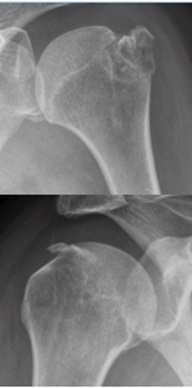Evaluation of a Novel Greater Tuberosity Fracture Classification and Survey of Expert Opinion on Optimal Treatment

Isolated fractures of the greater tuberosity are a common shoulder injury accounting for 14-21% of proximal humeral fractures. While nothing has previously been reported on fracture characteristics and their influence on surgical technique, previous reports have viewed greater tuberosity fractures as a uniform injury treated in a single fashion. In order to better define the optimal treatment, this study evaluates a classification system for isolated greater tuberosity fractures that takes into account fracture morphology and displacement.
With a total 45 clinical cases, images of both closed fracture of greater tuberosity of humerus treated operatively and images of greater tuberosity fractured treated without surgery were obtained in a 3:2 operative: non-operative ratio. The images were then exported to a computerized survey where surgeons could determine fracture classification (comminuted, avulsion, large thick or long thin fragment), displacement, treatment (operative or non-operative) and surgical technique. The survey was administered to a panel of orthopaedic surgeons with Sports Medicine or Shoulder and Elbow fellowship training, then randomized and repeated at a later date. Twenty-five orthopaedic surgeons with either Shoulder and Elbow or Sports Medicine fellowship training completed the surveys. Inter-observer reliability showed fair agreement on fracture classification, moderate agreement on fracture displacement, and substantial agreement for operative or non-operative treatment. Intra-observer reliability for fracture classification and fracture displacement was moderate, while the decision for operative or non-operative treatment was close to perfect. Nine different surgical techniques were described as the preferred surgical repair type involving arthroscopic or open techniques with tranosseous sutures, suture anchors, plates, and screw/washer methods of fixation.
The decision to perform surgery for greater tuberosity fractures has good agreement between surgeons and excellent intra-observer reliability. The intra- and inter-observer reliability has fair to moderate agreement for the proposed classification system, that which compares well with other fracture classification systems of the proximal humerus based on radiographs. In addition, numerous technique types are currently being utilized to treat these injuries. In summary, greater tuberosity fractures do not represent a single injury pattern, and this system helps to describe the different fracture patterns and may aid in surgical planning.







